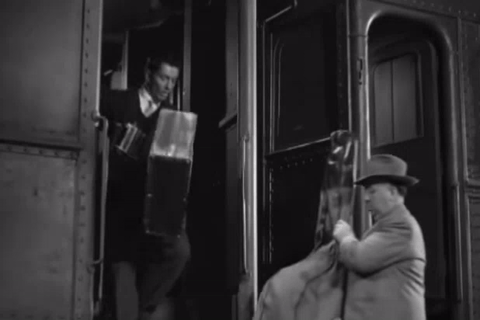The following is an abridged discussion of The reality effect, what it is and how it is utilised in film through design. I have used Strangers on a Train as an example to demonstrate how these techniques are applied. It's a great Hitchcock film for observing the use of mise en scene, and this analysis does contain spoilers for the film, so I'd recommend checking it out if any of this interests you.
Topics: The Reality Effect - Mise en Scene - Lighting - Composition - Costume - Props - Setting - Alfred Hitchcock - Strangers on a Train
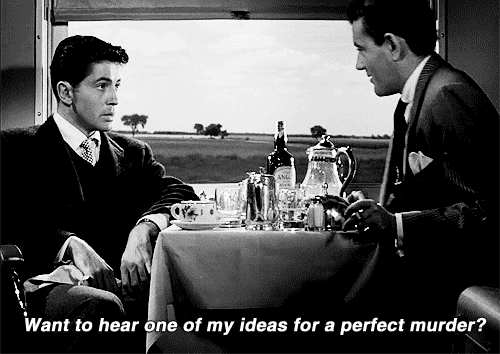
The reality effect is the way in which mise en scene is used to suspend disbelief and invite the audience to accept the world depicted on the screen. Mise en scene being the arrangement of the design elements on the stage of a theatrical production or set of a film. Bordwell and Thompson (2013 p. 113) comment on the reality effect in relation to the artistic liberty of film in regards to the world of the eccentric Dr Caligari The Cabinet of Dr Caligari (1920) “such a depiction certainly does not accord with our conception of normal reality. Yet to condemn the film for lacking realism would be inappropriate, because the film uses stylisation to present a madman’s fantasy.” The five elements of mise en scene are lighting, composition, costume, props and setting, and will be discussed in this order.
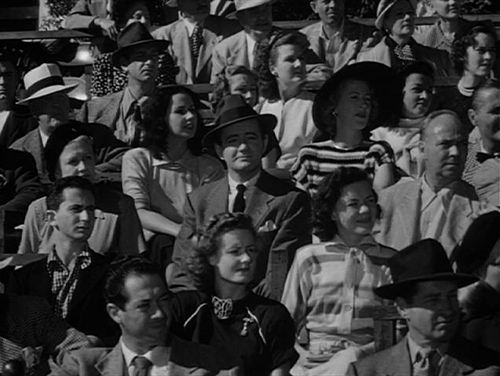
One scene set at a fairground depicts the character Bruno stalking and eventually murdering Miriam Haines, the film’ s protagonist Guy’s wife. Miriam, and two male companions, board a boat to ride through the fair’s Tunnel of Love and arrive at the ‘magic island’- an area secluded from the rest of the fair. The main fairground is characterised by the bright lights coming from the fairground rides and decorations, but contrastingly the magic island is not lit at all. Bordwell and Thompson (2013 p.124) explain “A brightly illuminated patch [draws] our eye to a key gesture, while a shadow may conceal a detail or build up suspense about what may be present”. After wandering off from her friends, Miriam turns towards the camera and her face is suddenly illuminated by the flame from a cigarette lighter. Her face appears to glow, and the light is reflected in the glass of her spectacles: a detail that becomes important later in the film. The viewer is drawn to Miriam’s expression by this illumination, registering the surprise on her face, she is not aware of what is about to happen to her. This image remains in the minds of the audience as the shot changes to a more abstract angle, which keeps the believable idea of Miriam’s reaction present throughout a more unbelievable sequence.
As the characters travel through the Tunnel of Love, we see Bruno’s shadow grow larger and eclipse Miriam’s. This sinister image suggests to the audience that Miriam is in immediate danger, and there is an offscreen scream giving the audience the momentary impression that Miriam has been attacked by Bruno, however this is then revealed to be laughter as we see Miriam and her companions emerge from the tunnel unharmed. The usage of imagery here sets up the danger for the moments to come and ensures the audience is captivated going into the climax of the scene.
After Bruno murders Miriam he climbs back into a boat and travels away from the island back to the funfair. This is pictured in a wide shot looking from the island towards the fair with Bruno’s boat moving steadily, alone back towards the lights. Here, the effects of light and shadow are used to both literal and figurative effect. The light illuminates what would be lit in reality and what wouldn’t is left in shadow, but this also provides a visual metaphor as Bruno returns to the supposedly safe, well-lit funfair. This effect serves to the inform the audience of the stakes for the remainder of the film, that this is now a reality where no character is safe.
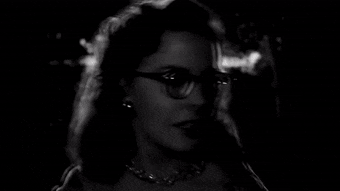
The climax of this scene is a long shot of Bruno strangling Miriam, reflected in Miriam’s spectacles that have fallen to the ground. The shot is incredibly long and does not cut for the entire duration of the ‘murder’. The drawn-out, lingering shot accompanied by the lack of sound except for the faded, jarring background noise of the funfair is uncomfortable, and the feelings of anxiety created serve to heighten the perceived intensity of the shot. Spoto (1983, p. 352.) comments on the shot’s “stark fusion of the grotesque and the beautiful” that “the astheticizing of the horror somehow enables the audience to contemplate more fully its reality." The reality effect is created here in the mind of the audience. Miriam’s murder is not clearly depicted, the camera is not pointed at the actors, it is the viewer’s imagination which fills in the missing aspects of the image, the lack of detail and contrasting imagery creating something much more horrifying and graphic than the actual visage depicted.
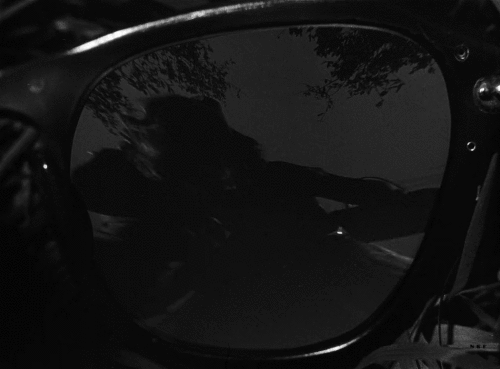
Another key scene takes place during a high-society party. The scene has a constant background ambience of chatter, and no music plays in the scene up until Bruno notices Barbara, the sister of Guy’s new girlfriend, at which point the same funfair music which played during Miriam’s murder begins to play as the camera pans in close on Barbara’s face, and her spectacles, mimicking the extreme close up of Miriam immediately prior to when Bruno strangles her. Glasses are a critical story telling element in Strangers on a Train, as two separate character’s spectacles serve to join the separate elements of the story together. Miriam wore glasses, and Barbara wears ones that look very similar to Miriam’s. When Bruno looks at Barbara, he envisions her as the woman he has murdered, and we see the cigarette lighter reflected in Barbara’s glasses as if looking through Bruno’s eyes when he killed Miriam. They serve as a visual link between the two worlds of Guy’s past and present, and Bruno’s strong reaction to seeing them demonstrating his status as the obstacle preventing Guy from being fully able to move on from one life to another. Not one character’s costuming is without service to the story. This design element is first utilised in the very first scene of the movie where the two lead characters are introduced initially only by their shoes, their full appearance not being shown until the two strangers meet on the train.
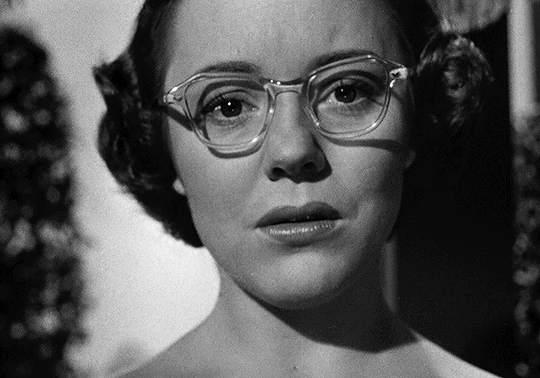
The lighter and glasses serve as a recurring motif for the looming threat of danger, relying on previous implications established earlier in the film. The reality effect works here to enlighten the audience to Bruno’s reality and the different way in which a murderer perceives the world. He does not have complete control over his desires: he is intelligent, and can think through his choices and be careful, but he is also deeply disturbed and could pose a danger at any given moment. This provides the audience with an overwhelming feeling that no location is safe and applies a feeling of urgency and constant threat to the film.
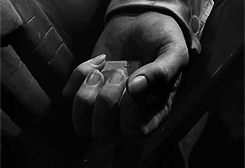
The fairground setting and the party setting are clear parallels of each other, playing back into the theme of doubles prevalent throughout the entire film. In his 1962 interview with Alfred Hitchcock Truffaut said, “This picture is systematically built around the figure ‘two’…Whether it’s Guy or Bruno, it’s obviously a single personality split in two”. Hitchcock’s reply “That’s right. Though Bruno has killed Guy’s wife, for Guy it’s just as if he had committed the murder himself” reinforces the reasoning behind a number of creative decisions. The funfair setting contrasts with the wealth of the party: everything is cheap with a small-town feel, whilst the party is lavish and expensive. The characters at the fair eat popcorn and ice cream, whilst the party goers drink Martinis. These two scenes present an interesting parallel to the characters of Guy and Bruno in Miriam and Barbara, characters who come from these two different worlds, but are connected in the story by visual similarity.
The settings again present the theme of doubles, with parallels between Miriam and Barbara’s experiences. Where the funfair scene shows shots of Miriam walking around, interacting with the setting and having a good time intercut with shots of Bruno following her with malicious intent. The party scene mirrors this with shots of Barbara walking around the party, interacting with the guests and smiling, enjoying herself, when suddenly Bruno enters and begins doing the same, talking with the same people Barbara has been shown talking to. In both scenes the women seem to be somewhat aware of the threat that Bruno poses, both acknowledge him as being suspicious but choose to continue what they were doing, only to fully realise the danger too late. Miriam is killed when confronted by Bruno and Barbara understands the danger she could have been in when Bruno almost kills an old woman imagining he is strangling Barbara instead. This parallel with Barbara after seeing the fate of Miriam earlier in the film sets up for the climactic finale of the film. It begins to become apparent here that Guy and his family may not be safe as long as Bruno is alive. The visual similarities on the composition of theses scenes work to inspire feelings of anxiety, by relying on what is now familiar to the audience, having been established as a real possibility already.
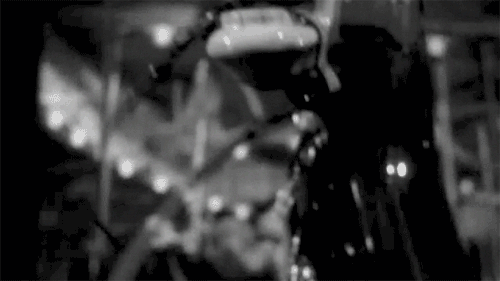
Black, (2013 p.8.) suggests of reality in film, “We need to recognise film as being first and foremost a “literalist medium” whose nature is to make things explicit- to reveal or display to the world in an evidentiary sense that is beyond the capability of traditional representational or art media”. This follows on the idea that film presents things to its audience in such a way that regardless of the ties a concept has or does not have with reality, an audience is willing to accept it as reality if what is captured on screen appears literal.
Barnwell (2004 p.14) describes Hitchcock’s preferred reality effect: “with an incredible desire to stay studio-bound, using the unnatural sterility so criticised by neo-realists, as a vital component in the creation of an environment that contributes to the visual and emotional meshing of the characters and story”. In Strangers on a Train Alfred Hitchcock utilises mise en scene to create an unnerving reality where anyone’s life can be driven off course by one encounter with a stranger. The use of costume and props as motifs of a larger narrative, along with clever contrasting use of set and lighting, both in individual scenes and as a connection to the larger picture, framed in creative and stimulating ways, demonstrates how each visual element in Strangers on a train is utilised to enhance and progress its reality.
